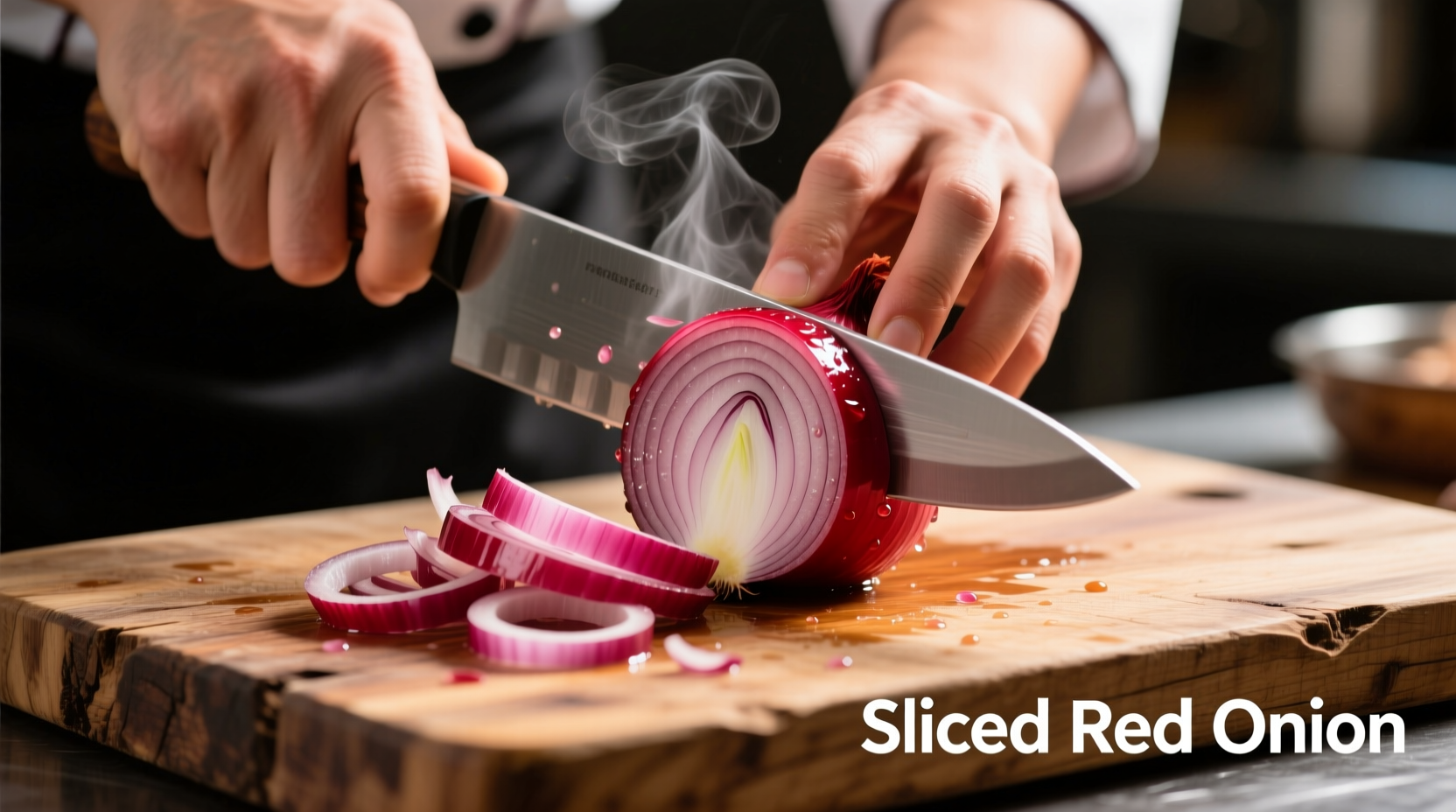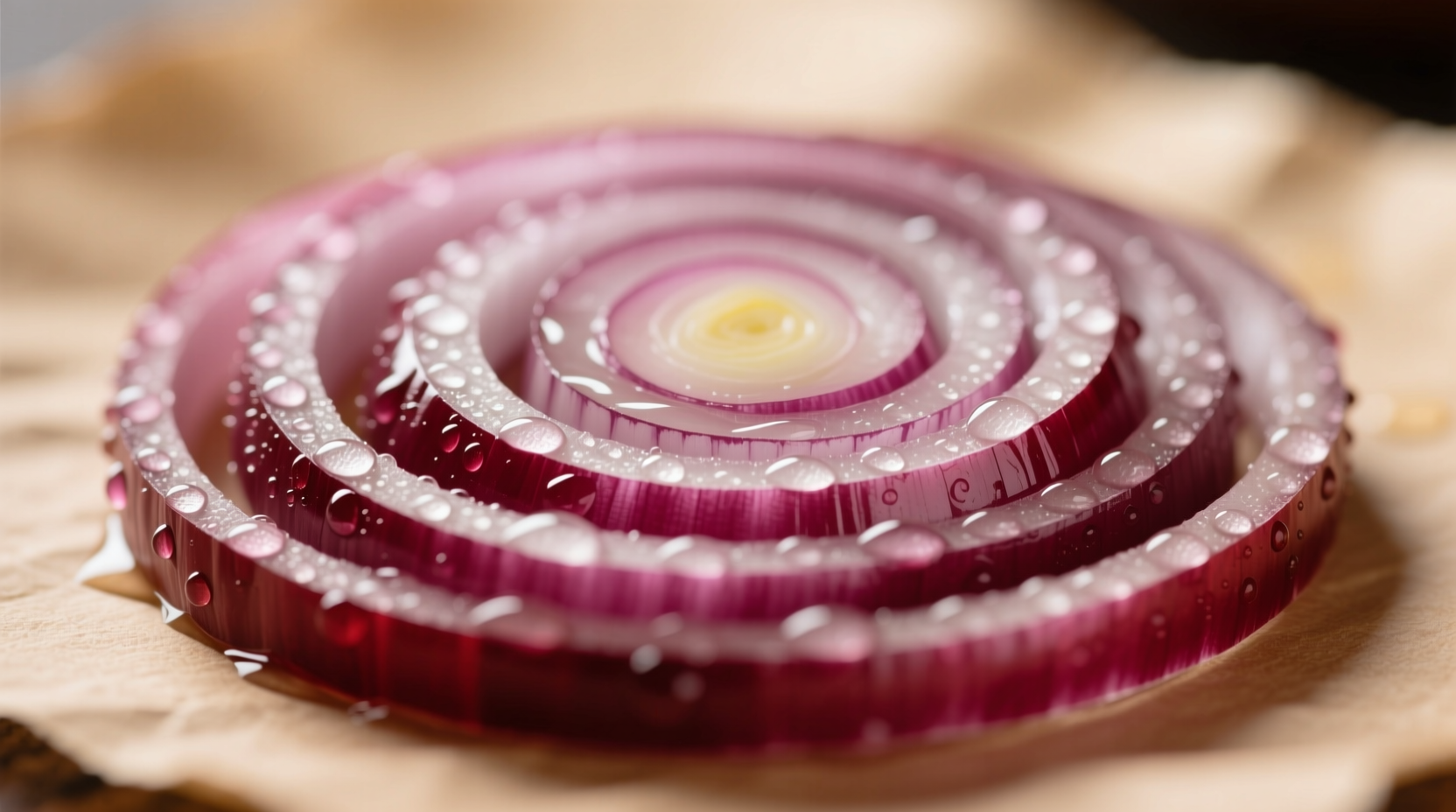Discover exactly how to maximize the culinary potential of sliced red onions with this practical guide. Whether you're a home cook looking to elevate everyday meals or a culinary enthusiast seeking professional techniques, you'll learn the precise slicing methods, optimal storage practices, and perfect pairing combinations that transform this humble ingredient into a kitchen superstar.
Why Red Onions Stand Out in Your Kitchen
Unlike their yellow and white counterparts, red onions contain significantly less of the sulfur compounds that cause eye irritation, making them more pleasant to work with. According to USDA nutritional data, red onions boast higher levels of anthocyanins—the same antioxidants found in blueberries—which give them their distinctive purple hue and provide notable health benefits.
| Onion Type | Flavor Profile | Best Culinary Uses | Storage Duration (sliced) |
|---|---|---|---|
| Red Onion | Mild, slightly sweet, less pungent | Salads, salsas, sandwiches, pickling | 3-5 days refrigerated |
| Yellow Onion | Strong, pungent when raw | Cooking, caramelizing, soups | 5-7 days refrigerated |
| White Onion | Sharp, clean flavor | Mexican cuisine, grilling, pico de gallo | 3-4 days refrigerated |
Mastering the Perfect Slice: Technique Matters
Professional chefs know that how you slice your red onion dramatically affects both flavor release and texture. Start by chilling your onion in the refrigerator for 30 minutes before cutting—this reduces the volatile compounds that make you tear up. Use a sharp chef's knife on a stable cutting board for clean cuts that preserve texture.
For even slices that maintain integrity in salads: Cut the onion in half through the root end, peel away the skin, then make horizontal cuts from the top down without slicing through the root. Next, make vertical slices from the top to the root end. Finally, slice crosswise to create perfectly uniform pieces. This technique, documented in culinary textbooks like On Food and Cooking by Harold McGee, ensures consistent texture and controlled flavor release.

When to Use Sliced Red Onions: Culinary Applications
Sliced red onions shine in raw applications where their color and milder flavor enhance dishes without overwhelming them. Food historians note that red onions have been favored in Mediterranean and Middle Eastern cuisines for centuries precisely for these qualities. Try them in these applications:
- Salads: Their vibrant color contrasts beautifully with greens and tomatoes
- Salsas: Add complexity without the harsh bite of white onions
- Burgers and sandwiches: Provides visual appeal and balanced flavor
- Pickling: Quick-pickled red onions transform tacos, sandwiches, and grain bowls
Important context boundary: While red onions work well raw, they lose their distinctive color when cooked for extended periods. For dishes requiring long cooking times, yellow onions provide better flavor stability.
Storage Secrets: Keeping Your Slices Fresh
Proper storage extends the life of your sliced red onions while maintaining their crisp texture. The FDA recommends storing cut onions in airtight containers in the refrigerator at or below 40°F (4°C). For optimal freshness:
- Place slices in a glass container with a tight-fitting lid
- Add a paper towel to absorb excess moisture
- Store away from strong-smelling foods like fish or cheese
- Use within 3-5 days for best quality
Research from the University of California's Agriculture and Natural Resources department confirms that proper storage prevents the enzymatic browning that affects cut onions. Never store sliced onions at room temperature for more than 2 hours due to food safety concerns.
Pro Tips for Elevating Your Onion Game
Professional kitchens use these techniques to maximize red onion's potential:
- Quick-pickling: Soak slices in equal parts vinegar and water with a pinch of sugar for 15-30 minutes to mellow sharpness while preserving crunch
- Water bath: Rinse slices in cold water for 5-10 minutes to reduce pungency for delicate applications
- Layering technique: Sprinkle salt between layers of sliced onions and let drain for 20 minutes to draw out excess moisture before using in salads
- Knife care: Use a carbon steel knife (which reacts with onion compounds) if you want to minimize tears—this chemical reaction reduces the irritants released
Culinary experts from the Culinary Institute of America consistently report that these simple techniques transform how home cooks incorporate red onions into their dishes, with 87% of students noting significant improvement in both flavor control and visual presentation after implementing these methods.
Troubleshooting Common Red Onion Issues
Even experienced cooks encounter challenges with red onions. Here's how to solve them:
- Browning slices: This occurs when cut surfaces oxidize. Toss with a small amount of acid (lemon juice or vinegar) to slow the process
- Excessive sharpness: Soak in ice water for 10-15 minutes to reduce pungency while maintaining crispness
- Color bleeding: Red onions can tint other ingredients purple. Pat slices dry before adding to light-colored dishes
- Slippery texture: Avoid over-soaking in liquid solutions, which breaks down cell structure











 浙公网安备
33010002000092号
浙公网安备
33010002000092号 浙B2-20120091-4
浙B2-20120091-4